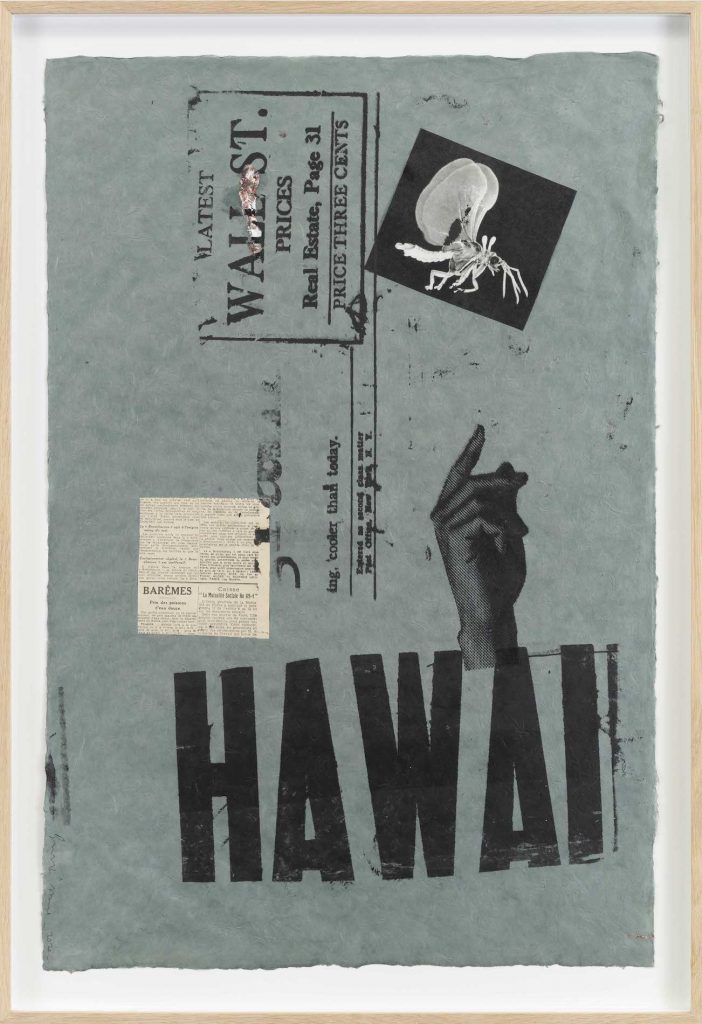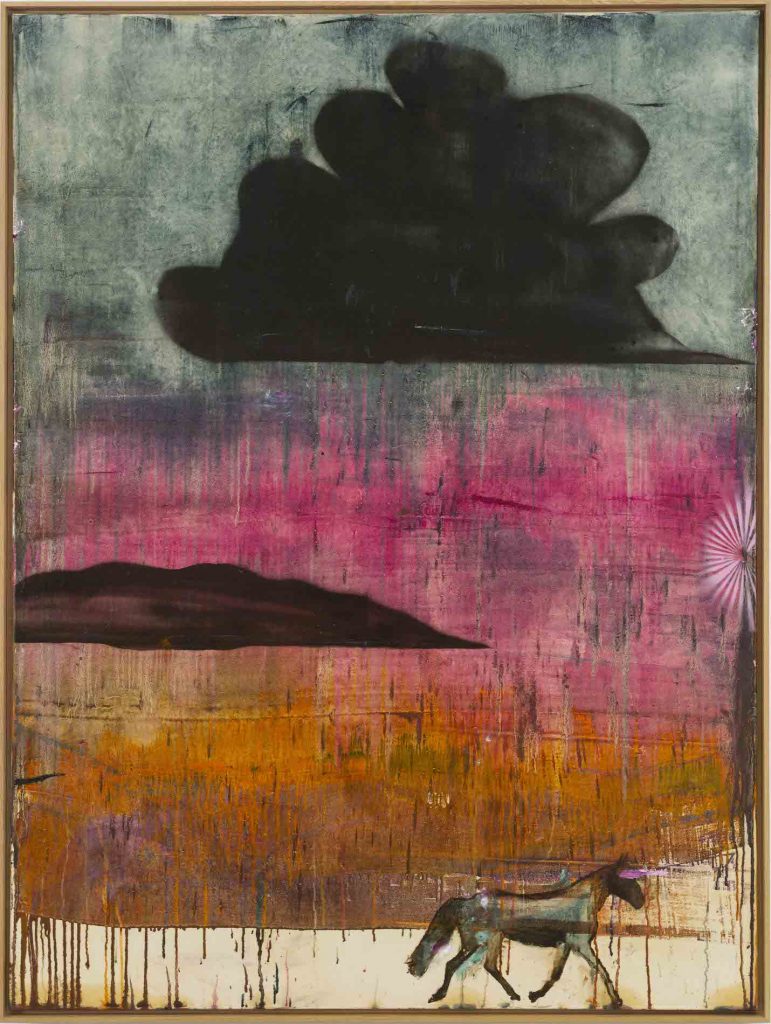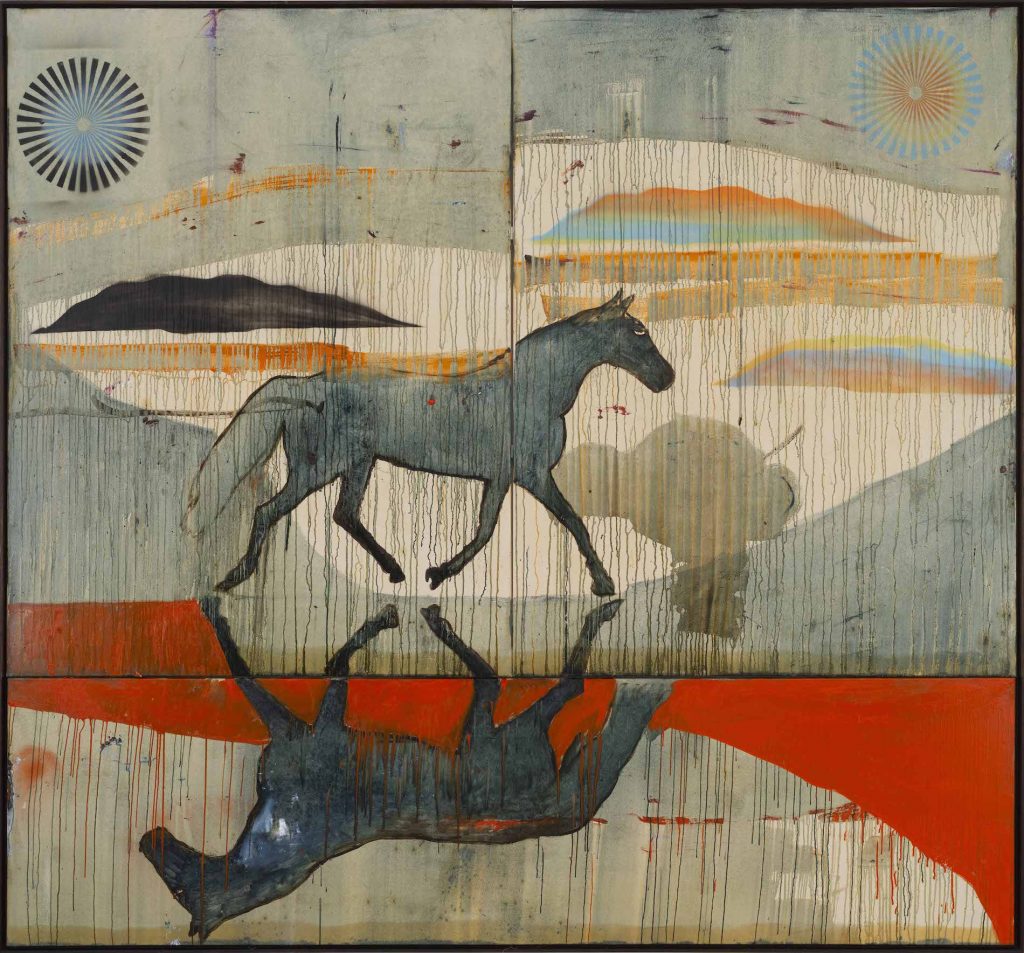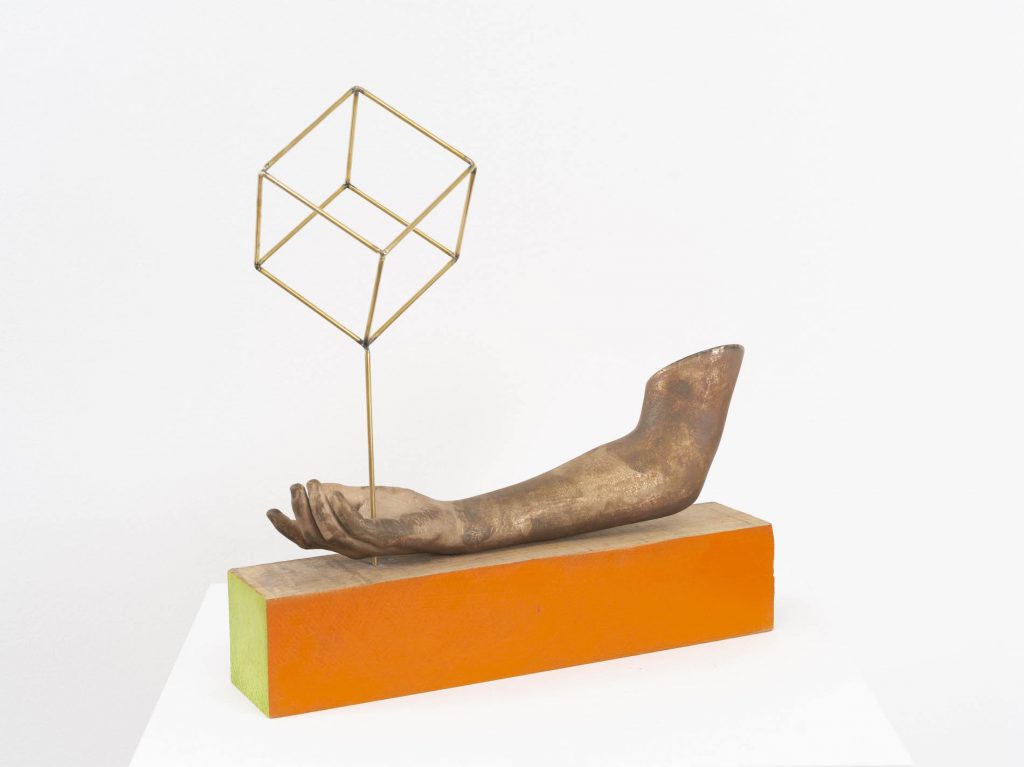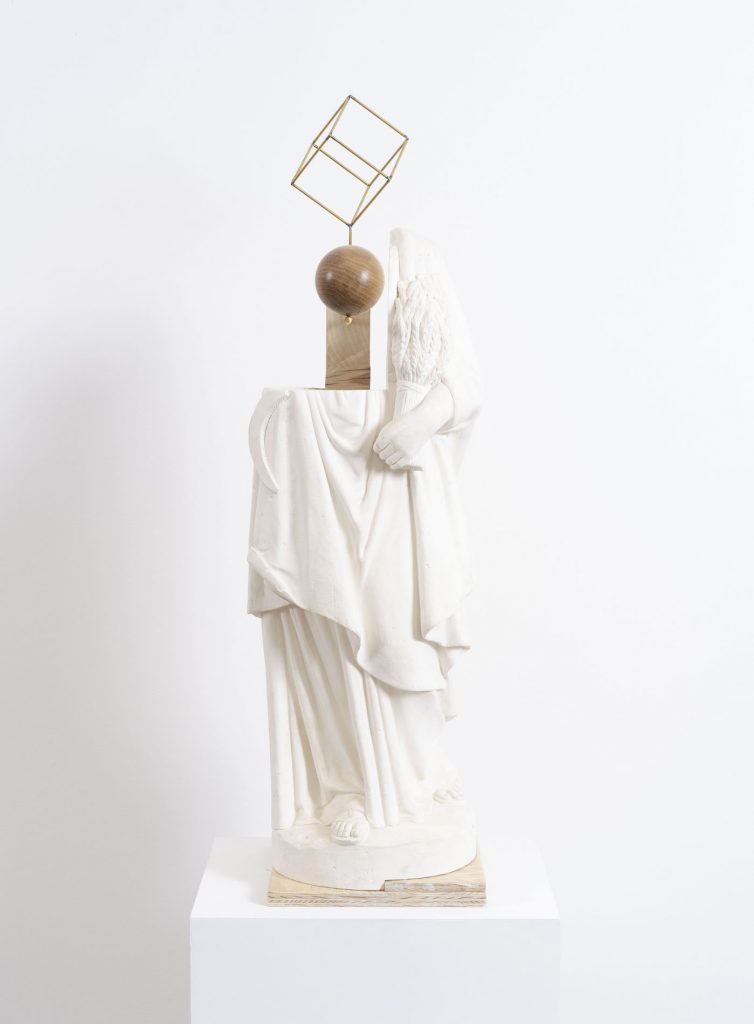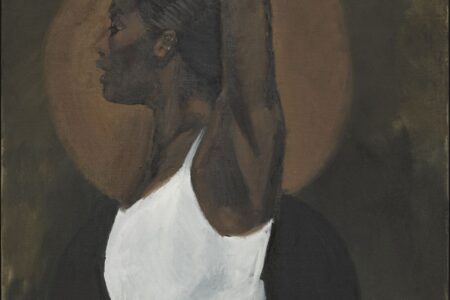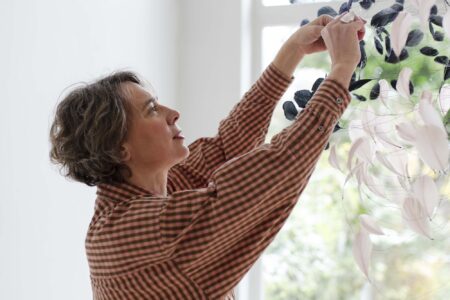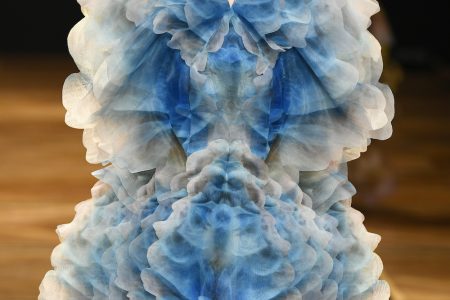Benoît Maire: Miss Rankin
Recently Galerie Nathalie Obadia presented Miss Rankin by Benoît Maire’s, whose practice is at the crossroads between philosophy and art.
Recently Galerie Nathalie Obadia presented Miss Rankin, French artist Benoît Maire’s second exhibition, following his first held in 2018, rue du Cloître Saint-Merri. Benoît Maire’s practice is at the crossroads between philosophy and art, thought and matter: his strength resides in his ability to give body to an idea, by focusing on the sensory qualities of a work. Following a kind of protean approach, which combines painting, installation, furniture and video, the exhibition articulates itself around a group of new canvases from his series Clouds paintings, sculptures and collages that convey the artist’s allegorical universe and his recent progress. TLmag got to ask some questions to the artist himself to fully grasp the show.
The front page of the New York World Telegram, on the pivotal date of December 8, 1941, indicates: “light rains tonight […]; tomorrow cloudy followed by clearing, cooler than today,” just above the headline, in bold type: “1500 DEAD IN HAWAII CONGRESS VOTES WAR.” Using this as a springboard, Benoît Maire began to use silkscreens, last summer, in his series Clouds paintings, begun in 2012, to reproduce various parts of this newspaper page, where current climactic considerations are printed side by side with highly critical decisions. In his resulting, oneiric compositions, the artist distills informative content that reveals the underlying conflict: the moment when the United States entered World War II. Another fragment from this front page displays the face of Miss Rankin, who lends her name to the exhibition: driven by an absolute confidence in the forces of free speech and discussion, Jeannette Rankin was the only congresswoman to seek a peaceful outcome to the conflict. If Cloud Paintings evoke at once the softness of Chinese landscape painting, impressionist recollections or Emil Nolde’s extraordinary skies, these fragments of texts, taken from a newspaper and crudely reproduced, deliver information that gives weight to daydream and anchors it within a historical reality. But these archival inserts also interest the artist as textual elements, with their meaningful matter and formal opportunities. And just like that, his landscapes enter the realm of history painting. As the artist elaborated on the picture; ‘’The clouds stand for painting, the horse stands for the painter.’’
While inscribing itself in the continuity of Renaissance forms, via a classical painting motif, these works also denote the contemporaneity of our relation to facts, the cloud being as much this “globulous mass,” where “everything turns to pleasure,” as described by Gaston Bachelard, as this immense amassing of big data that records information about our personal lives through our online interactions. For Benoît Maire, the cloud is an allegory of painting: “a place of constant formation” and “of the recognition of personal projection,” to borrow his words, but also a concept that is highly topical since it was reinvented in Palo Alto, California. Two types of clouds are then superimposed: the natural cloud and the technological cloud, in a jumble that is translated by the techniques used by the artist: simultaneously traditional, with chromatic, oil-paint gradients; impastos; glacis; palette-knife painting; deep, vaporous and sometimes iridescent hues; and contemporary, with the use of stencils and aerosol cans, silkscreens, drippings, and scotch tape.
The exhibition also brings to light a group of recent collages that constitute an experimental terrain for Benoît Maire. Newspaper clippings or parts of sentences, chosen scrupulously, cut and decontextualized, are juxtaposed with photographs of animals or representations of all sorts of natural phenomena. ‘’It is only out taste for different materials and the way they match: metal and welding, sandstone and glazing (firing), wood and painting and varnishes and cutouts, plaster and molding, etc. I like these different processes and their plastic rendering.’’
Upon a large stand conceived specifically for the exhibition are nine recent sculptures that prolong the series of Châteaux, begun in 2014, which consists in balancing two opposite objects—one from the mineral world, one manufactured—via a delicate brass architecture or a minimalistic and poetic juxtaposition. Three-dimensional assemblages of disparate elements, associating figures like reason (a bronze arm reproduced on a 7-year-old model holding a cube); an allegory of summer (a headless statue, bearing a scythe in his belt and carrying ears of wheat); and a shimmering, enameled, blown-glass Coca Cola bottle, share the immaculate space. Each sculpture is devised according to a geometric ratio that questions the current living conditions of humans, both physical and emotional. The idea of movement is essential and designates the path around the exhibition: in the paintings that border the large sculpture stand, a horse passes, calmly, and the artist seems to follow it with a slow tracking shot. ‘’It is a bit like a chessboard scattered with different pieces where different possible rules may come into play, and there is a relationship with the female presence. In my recent film « Peindre sous Reicha », the voice-over says « castling the queen » referring to a defense movement which is typically reserved for the king, yet I wanted to attribute it to a symbol of feminine power.’’-the artist elaborates on the set-up..
Like the dark cloud, the horse also travels around the exhibition and punctuates it with its mysterious and ominous presence. Under a profile silhouette that always remains the same, archetypal, the animal crosses different planes and dimensions. In Benoît Maire’s visual lexicon, this movement represents escape, in the sense used in Shakespeare’s Richard III, where the king wishes to exchange his whole kingdom for one animal: “A horse, a horse! My kingdom for a horse!” Similarly, for the artist, “the figure of a horse serves to prioritize being over having, and in order for this to be effective, the being needs to escape.”
With a sharpened sensitivity, Benoît Maire creates a bridge between substance and structure, concept and history where, like a riddle, enigmas remain. The exhibition thus becomes a space for projection and investigation where each element finds a special place, each work contributes to a general sense of harmony, rich with hidden meanings. A rather ‘traditional’ room in its ‘proportions’ according to the artist, which influenced a rather traditional setting up to ‘’avoid overthinking the display’’.
Benoît Maire’s show ‘Miss Rankin’ was on show from the 4th of September until the 22nd of October at Galerie Nathalie Obadia.
Cover image: Benoît Maire, Peinture de nuages (diptyque), 2020, Huile et peinture en spray sur toile, Oil and spray painting on canvas, 204 x 304 x 5 cm, (80 5/16 x 119 11/16 x 1 31/32 inches).
All images photo credit: Bertrand Huet/Tutti image, courtesy of the artist and Galerie Nathalie Obadia Paris/Brussels.
